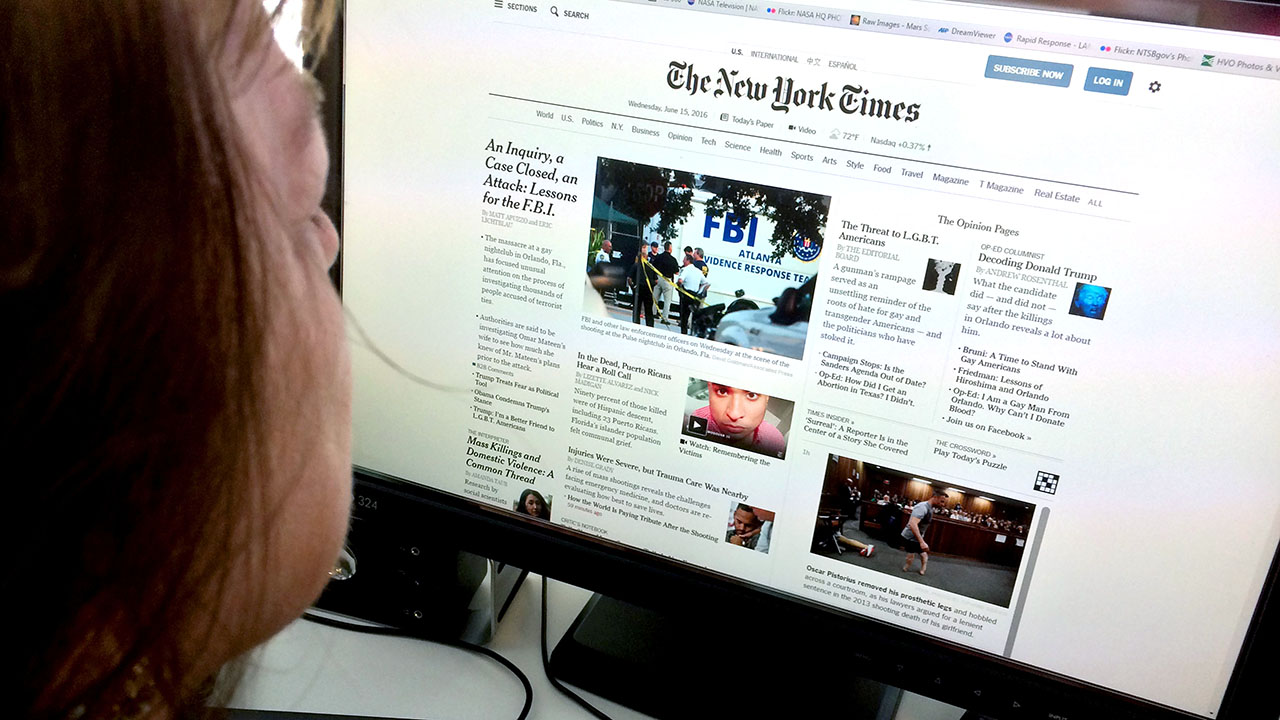The Buzz on News Channels
The Buzz on News Channels
Blog Article
3 Easy Facts About News Channels Explained
Table of ContentsGetting My News Channels To WorkThe Of News ChannelsThe Single Strategy To Use For News ChannelsEverything about News Channels
Rolling information networks broadcast information web content 24 hours a day. The arrival of the web has actually permitted the regular 24-hour-a-day presentation of lots of video clip and audio news reports, which are updated when extra information comes to be available; several tv broadcasters provide material initially offered on-air as well as exclusive or supplemental news content on their sites.Terminals that use a "wheel" format have a tendency to keep to an established timetable of certain shows at particular specific mins on the hour, and one of these sectors is often a news. These short publications will certainly provide summaries of any kind of breaking information of interest, and might consist of neighborhood issues such as weather report or web traffic records.

News broadcasts in the USA were originally sent over the radio. NBC started broadcasts in November 1926, with CBS going into manufacturing on September 25, 1927. Both initially gone over comparable topics, such as election outcomes, presidential inaugurations, and other matters of issue to the general public. Nevertheless, NBC quickly arised as the leading force for amusement ability.
How News Channels can Save You Time, Stress, and Money.
A general change gradually occurred in the design of the evening newscasts in the majority of nations. In the 1950s, tv was novel sufficient that it was considered entertainment. In the 1960s and 70s, tv newscasts tended to be abnormally "severe" by later standards, including more "hard information" and less light amusement mixed in.

From 2000 to 2010, total viewership of television broadcast information proceeded to decrease. Some news-adjacent wire programs gained fame and success in this era (such as the comedy-focused and the commentary-focused ). Their gains did not offset the proceeding steep decline in viewership of mainline network information.
Some Known Details About News Channels
broadcasts on various other stations. The National, which has actually broadcast on CBC Tv considering that 1954, is the longest-running national network newscast in copyright. All 3 networks also generate regular newsmagazines: CBC's (broadcast because 1975), Global's (broadcast because 2008), Discover More and CTV's (broadcast because 1966 and presently the longest-running network newsmagazine in copyright). [] CTV's is the single national early morning information program on broadcast television in copyright, and replaced, which aired since 1975.
Neighborhood TV terminals in the United States usually broadcast neighborhood news 3 to four times a day on standard: typically broadcasting at 4:30, 5:00, 5:30, or 6:00 a.m.; twelve noon; 5:00 and 6:00 p.m. in the early night; and 10:00 or 11:00 p.m. Stations that create local broadcasts usually broadcast as little as one Continued to as much over twelve hours of neighborhood news on weekdays and as little as one hour to as much as 7 hours on weekend breaks; news shows on weekends are normally restricted to morning and night newscasts as the variable organizing of network sports programs (if a terminal is associated with a network with a sporting activities division) normally prevents most stations from lugging midday broadcasts (however a few terminals located in the Eastern and Pacific time zones do create weekend noontime newscasts). From the 1940s to the 1960s, broadcast tv stations normally offered regional information programs only one to 2 times each night for 15 minutes (the typical size for several locally generated programs at the time); normally these programs aired as supplements to network-supplied evening information programs or leadouts for primetime programming.
The Best Strategy To Use For News Channels
In situations where a terminal with an existing information division enters right into a news share agreement, it will result either the 2 divisions merging or the straight-out conversion of broadcast production from internal to outsourced manufacturing.
These names are intended to establish one station aside from the remainder, especially for audiences who web link are chosen for audience dimension surveys. If the respondent was not able to supply a channel number or call letters, the broadcast title is frequently sufficient for the appropriate station to get Nielsen ratings credit report. [] The Big 3 broadcast tv networks generate early morning and evening national broadcasts.
Report this page